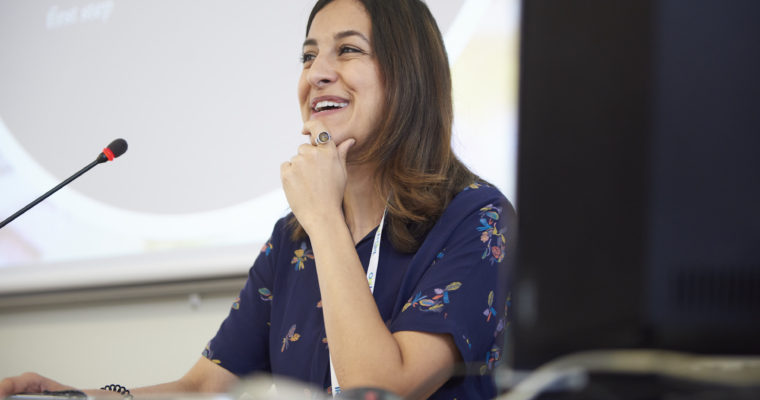Many of us have to do a lot of speaking over the course of our career. Being able to give an effective talk is a huge asset for any person, but for academics in particular. Opportunities hang on our ability to not just carry out great research but to talk about it. Here are three key points you can use to improve your presentations, whether you are explaining your Ph.D. to a group of peers, or you are addressing an auditorium full of people.
Tell a story
Many of us are tempted to structure our presentation the same way as we structure our paper. So, we present the literature, frame our approach as distinct, copy our equations into our slides, and write out our findings. But we are often better off with a presentation that frames our work as a story; this way, our audience is much more likely to take in and remember our ideas.
You may think your work doesn’t have a story, but Lynn Parramore, Senior Research Analyst, can help you find it. Writing and working with economists whose ideas are often buried under jargon, she knows how to pull out the narrative. In this video, Lynn explains to you how to do this yourself.
Manage your delivery
We can all think of a professor whose voice put us to sleep, no matter how interesting the underlying subject matter might have been. So, pitch, pace, and attitude is critical if you want to keep your audience engaged. Jackie Pocklington, Professor of Business and Technical English at Beuth University of Applied Sciences (and father of Jay Pocklington!) is full of great tips on this, including:
Make sure that YOU are the source of the information; not your slides.
This means only putting keywords on the slides, and using them as a teaser. Announce a page before clicking it, not after. Otherwise you end up telling people something they just read.
Watch the end of your sentences
Nerves or habits may cause the tone of our voice to rise at the end of our sentences. But this is not how we naturally speak. Therefore, correcting this to make sentences to go down at the end can make a dramatic difference to your delivery.
Drop the perfectionism.
Many of us feel that we need to deliver a perfect presentation; no mistakes, and nothing forgotten. But focusing all our attention on avoiding mistakes leaves little room to think about our delivery. Remember that when you’re an audience member, you don’t demand perfection either. If a speaker makes a mistake and corrects themselves to serve us well, we might even like them more.
Don’t underestimate the need for preparation
Some people seem like they can pull brilliant speeches out of thin air, but chances are that they have spent more time preparing than you think. The Official TED Guide to Public Speaking discusses various strategies for preparation, ranging from the memorization of every word, to talking from bullet points. All require careful preparation. Therefore, figure out what type of preparation strategy works for you, and make the time to carry it out; you owe it to your audience.
As with everything, the more you do it, the better you get. If you’re looking for a way to practice, the Young Scholars Initiative offers friendly audiences in a multitude of workshops and convenings every year. Moreover, keep an eye out on the calendar for an opportunity to present your work, and become the killer speaker you have the potential to be.

